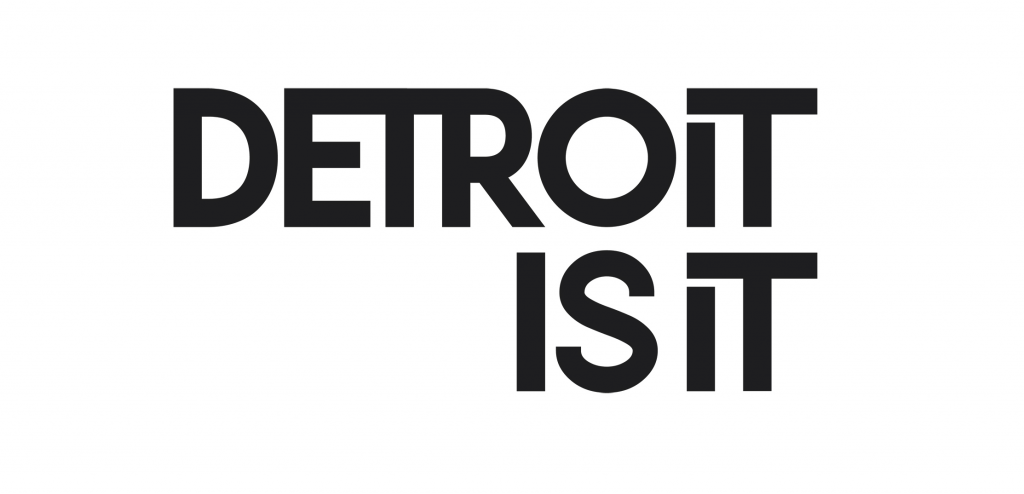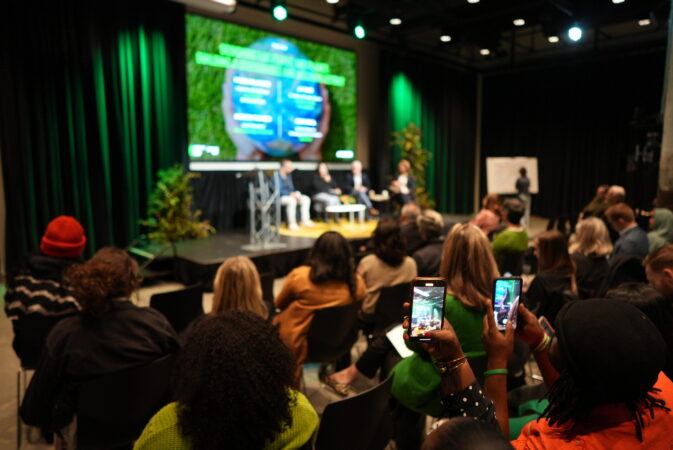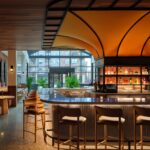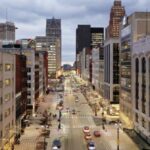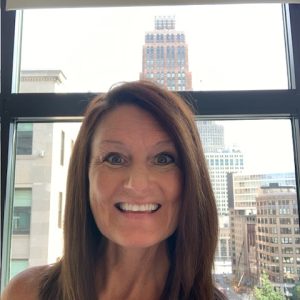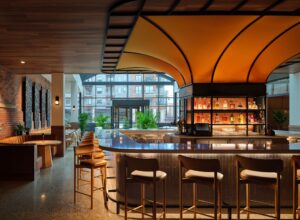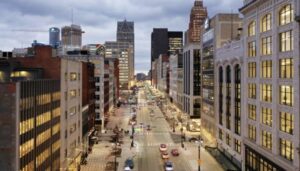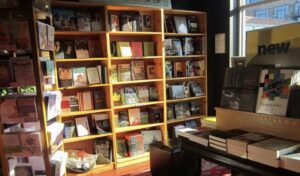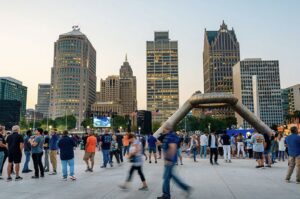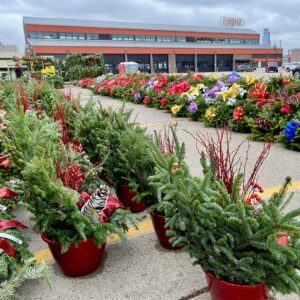Detroit is a city that has always rebuilt itself — from the factory floor to the neighborhood block. But as the climate crisis and urban inequity redefine what “growth” means, a new question rises to the surface: How do we evolve our cities without burying them in waste?
Now in its fourth year, the Sustainable Urban Design Summit (SUDS) — hosted by Detroitisit and founder Ivana Kalafatic — gathered architects, planners, policymakers, and designers to explore that very question. With 13 tracks, 35 speakers, and live sketching from the College for Creative Studies, this year’s event reflected both urgency and optimism: a shared belief that sustainability is not a single discipline, but a collaborative movement.
Set against the backdrop of Detroit’s ongoing transformation, this year’s summit took place at New Lab, the innovation hub inside Michigan Central innovation district, where dozens of startups and research teams are actively shaping the future of sustainability. The choice of venue was intentional — a space built for new ideas and collaboration. New Lab is literally a living example of what the summit set out to explore: how design, technology, and human creativity converge to build sustainable cities.
Globally, the built environment accounts for roughly 39% of greenhouse gas emissions, with construction and demolition generating more than a third of the world’s total waste. If nothing changes, that number is expected to double by 2050. The summit didn’t just address this reality; it challenged Detroit — and cities like it — to lead the way forward.
Voices & Takeaways from the Day…
“Architects live at the intersection of technology, human experience, and ecology.” – Cody Hansen, Albert Kahn Associates
By balancing technical precision with human purpose, Hansen noted, architects have the unique ability to shape how communities function — and how they feel. Buildings, he said, should act as “batteries for their communities” — storing energy, supporting resilience, and serving as resources for mental health and social connection.
“Sustainability, resilience, equity — it all comes down to empowerment.” – Janet Attarian, Mithūn Group
Attarian reminded the audience that real change begins with shifting power structures. From residents to ecosystems, empowering stakeholders creates the foundation for long-term sustainability.
“The relationship between architecture and politics is crucial.” – Stefano Boeri, architect of the Vertical Forest
Boeri emphasized that sustainable design must move from theory to policy — where design ideas are translated into action and regulation. Architects, he said, have an obligation to shape reality, not just imagine it.
“Our culture is our sustainability.” – Janet Attarian
Culture, Attarian argued, determines how we interact with our environment. Protecting local stories, traditions, and identities is as essential to sustainability as protecting air or water.
“We can’t just think tactically — we need systemic change.” – Dan Pitera, University of Detroit Mercy
Pitera called for collaboration across public and private sectors — where data, design, and development converge to create more equitable and lasting systems.
“We already have the technology to solve 80–90% of our sustainability challenges — what’s missing is political will.” – Janet Attarian
A reminder that innovation isn’t the problem; implementation is.
“Everything we do in the next ten years will define my nine-year-old’s life.” – Jocelyn Benson, Michigan Secretary of State
In her keynote, Benson urged attendees to view sustainability through a deeply human lens. Michigan, she said, sits on 20% of the world’s fresh surface water and houses world-class universities developing clean technology — but also faces a fragile grid, aging infrastructure, and communities still recovering from crises like Flint. “Doing nothing is more expensive,” she said. “Investing in systems that work for everyone is what sustainability really means.”
“Mass timber allows us to build better stories — not just better buildings.” – Sandra Lupien, MassTimber@MSU
From carbon storage to faster construction timelines, the rise of mass timber was presented as both a design and social opportunity. Lupien’s panel illustrated how material choice intersects with community building, featuring projects in Kalamazoo, Jefferson Chalmers, and Highland Park.
“Sustainability has to include people — training, opportunity, and belonging.” – Anthony Askew, City on the Rise Development
Askew’s work in Highland Park with Mama Shu aims to create a local supply chain for mass timber — linking ecological goals with workforce empowerment. “We’re hoping what we build here can be a model for other cities,” he said.
“Detroit’s downtown belongs to Detroiters.” – Jake Chidester, Bedrock
In a fireside chat with Melissa Dittmer of Michigan Central, both reflected on Detroit’s architectural legacy and the responsibility of design to serve community. “The next 100 years of Detroit design,” Dittmer said, “should be defined by inclusion — who gets to build, who benefits, and who belongs.”
A Shared Blueprint
If SUDS 2025 had a single takeaway, it was that sustainability is no longer about materials and metrics — it’s about mindsets.
The architects, developers, policymakers, and designers who attended agreed: the sustainable city of the future must be equitable, imaginative, and deeply human.
And if the voices at this year’s summit are any indication, Detroit isn’t just participating in that future — it’s helping design it.
As always, be sure to subscribe to our newsletter for regular updates on all things Detroit and more
